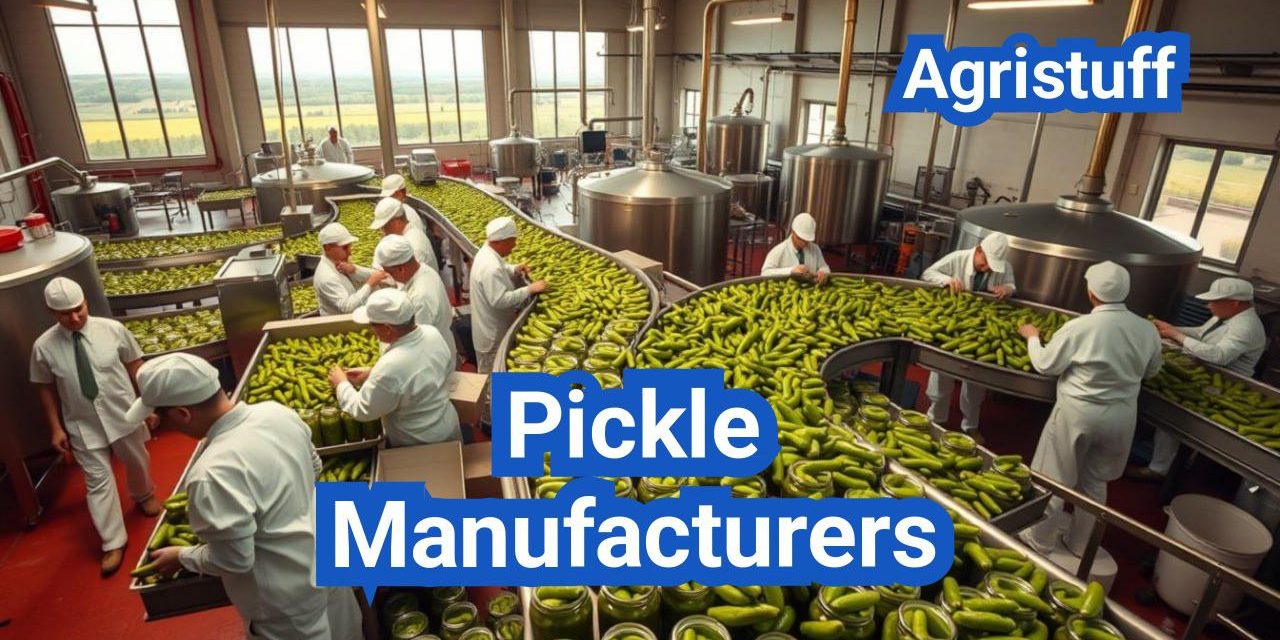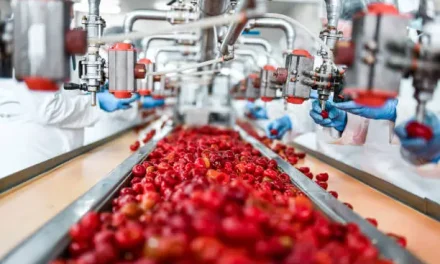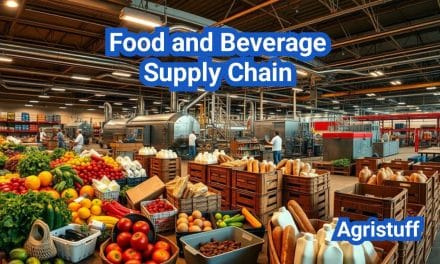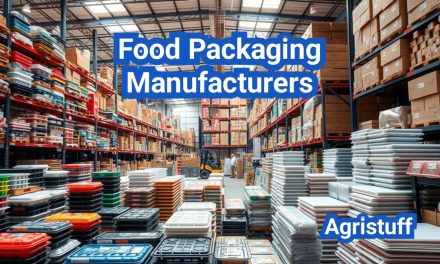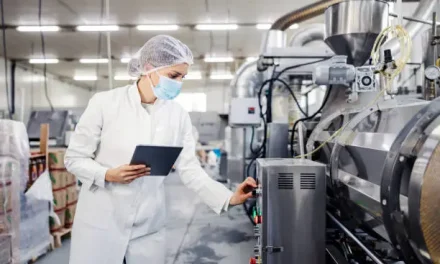The pickled vegetable industry is a thriving market in the United States, with various pickle manufacturers employing different methods to produce their products.
Two primary methods dominate the industry: fermentation and quick-pickle methods. While both techniques yield delicious results, they differ significantly in terms of process and outcome.
Fermentation involves allowing vegetables to break down naturally by microorganisms, creating lactic acid and preserving the vegetables. In contrast, quick-pickle methods involve soaking vegetables in a brine solution or vinegar, achieving a similar result in a shorter timeframe.
Leading companies in the industry, such as Vlasic and Claussen, utilize these methods to cater to diverse consumer preferences.
Key Takeaways
- The pickled vegetable industry is a significant market in the U.S.
- Fermentation and quick-pickle methods are the two primary techniques used.
- Fermentation involves natural breakdown by microorganisms.
- Quick-pickle methods use a brine solution or vinegar for preservation.
- Leading companies like Vlasic and Claussen employ these methods.
The U.S. Pickle Industry: An Overview
As a significant segment of the food industry, the U.S. pickle market shows promising trends. The industry encompasses a wide range of products, from traditional dill pickles to specialty pickled vegetables.
Current Market Size and Trends | Pickle Manufacturers
The U.S. pickle industry has experienced steady growth over the years, driven by increasing consumer demand for pickled products. According to market research, the pickled vegetable market in the United States was valued at approximately $1.4 billion in 2020.
Key trends shaping the industry include:
- Increasing demand for organic and non-GMO pickled products
- Growing popularity of international pickle varieties
- Rise of e-commerce platforms for pickle sales
- Expansion of product lines to include pickled fruits and vegetables
Consumer Preferences and Demand Patterns
Consumer preferences play a crucial role in shaping the U.S. pickle industry. There is a growing demand for pickles with unique flavors and textures, as well as products that cater to specific dietary needs.
Key consumer preferences include:
- Low-sodium and reduced-sugar options
- Artisanal and craft pickles
- Products made with natural ingredients
- Variety packs offering different flavors and textures
The Pickled Vegetable Industry Landscape | Pickle Manufacturers
The pickled vegetable industry is characterized by a mix of large manufacturers and smaller, regional players. Major companies like Mt. Olive, Vlasic, and Claussen dominate the market, while smaller producers focus on niche products and local distribution.
The industry landscape is also influenced by factors such as:
- Regulatory requirements for food safety
- Advancements in manufacturing technology
- Shifts in consumer preferences and demand patterns
Leading Pickle Manufacturers in the United States
Among the top pickle manufacturers in the United States, a few stand out for their quality and innovation. The U.S. pickle market is characterized by a mix of traditional and modern manufacturers, each contributing to the diverse range of pickle products available to consumers.
Mt. Olive Pickle Company
Mt. Olive Pickle Company is one of the prominent players in the U.S. pickle industry. Known for its wide range of pickle products, Mt. Olive has established itself as a leader through its commitment to quality and customer satisfaction. The company offers various pickle types, including dill, sweet, and bread and butter pickles, catering to different consumer preferences.
Vlasic (Owned by Conagra Brands)
Vlasic, owned by Conagra Brands, is another significant manufacturer in the U.S. pickle market. Vlasic is renowned for its high-quality pickles and innovative products. The brand has a long history of providing consumers with delicious pickles that are enjoyed across the country.
Claussen (Kraft Heinz)
Claussen, a brand under Kraft Heinz, is well-known for its refrigerated pickles. Claussen pickles are appreciated for their crunchy texture and fresh flavor, making them a favorite among consumers who prefer refrigerated pickle products.
Kaiser Pickles and Other Significant Players
Kaiser Pickles is another notable manufacturer in the U.S. pickle industry. While not as widely recognized as some of the larger brands, Kaiser Pickles has carved out a niche for itself through its commitment to quality and traditional pickling methods. Other significant players in the industry include smaller, regional manufacturers that contribute to the rich diversity of pickle products available in the U.S. market.
| Manufacturer | Notable Products | Brand Ownership |
|---|---|---|
| Mt. Olive Pickle Company | Dill, Sweet, Bread and Butter Pickles | Independent |
| Vlasic | Stackers, Sandwich Stackers, Pickle Chips | Conagra Brands |
| Claussen | Refrigerated Pickles, Pickle Slices | Kraft Heinz |
| Kaiser Pickles | Traditional Pickles, Specialty Pickles | Independent |
Understanding Pickle Manufacturing Methods
Understanding the different methods of pickle manufacturing is crucial for appreciating the complexity of the pickle industry. Pickle production involves a range of techniques, from traditional fermentation to modern quick-pickle methods, each with its own set of advantages and applications.
Traditional Fermentation Process | Pickle Manufacturers
The traditional fermentation process, also known as lacto-fermentation, is a time-honored method that involves allowing cucumbers to ferment in their own juices, typically with the addition of salt. This process creates lactic acid, which acts as a natural preservative. The fermentation process can take several days to weeks, depending on factors like temperature and desired level of sourness.
The benefits of traditional fermentation include the development of complex flavors and a crunchy texture. However, it requires careful monitoring to ensure the fermentation process proceeds correctly and safely.
Quick-Pickle (Acidified) Methods
Quick-pickle or acidified methods involve soaking cucumbers in a brine solution that is typically vinegar-based. This method is faster than traditional fermentation, as it doesn’t rely on the natural fermentation process to create acidity. The result is a product that is ready for consumption much sooner, often within a few hours or days.
Quick-pickling is advantageous for mass production as it allows for a consistent product and faster turnaround times. However, the flavor profile may not be as complex as that achieved through traditional fermentation.
Hybrid Approaches in Commercial Production | Pickle Manufacturers
Some manufacturers use hybrid approaches that combine elements of both traditional fermentation and quick-pickling. For instance, a product might be initially fermented to develop flavor and then acidified to enhance preservation and shelf life. This approach can offer a balance between the complex flavors of fermentation and the convenience of quick-pickling.
The choice of manufacturing method depends on various factors, including market demand, production capabilities, and the desired characteristics of the final product.
| Manufacturing Method | Time Required | Flavor Profile | Preservation Method |
|---|---|---|---|
| Traditional Fermentation | Several days to weeks | Complex, sour | Lactic acid |
| Quick-Pickle (Acidified) | A few hours to days | Less complex, tangy | Vinegar-based brine |
| Hybrid Approaches | Varies | Balanced, complex | Combination of lactic acid and vinegar |
The Science of Cucumber Fermentation

Cucumber fermentation is a multifaceted biochemical process that transforms raw cucumbers into pickles. This transformation is not just about changing the taste; it’s a complex interplay of microbial activities, enzymatic reactions, and physical changes that occur under specific conditions.
Microbial Processes in Fermented Cucumbers
The fermentation of cucumbers is primarily driven by lactic acid bacteria, including species such as Lactobacillus plantarum and Pediococcus pentosaceus. These microorganisms feed on the natural sugars present in cucumbers, producing lactic acid as a byproduct, which acts as a natural preservative.
“The role of lactic acid bacteria in fermentation is crucial as they not only preserve the cucumbers but also contribute to the development of the characteristic sour taste and crunchy texture of pickles,” notes Dr. Jane Smith, a food microbiologist.
Time and Temperature Considerations | Pickle Manufacturers
The duration and temperature of the fermentation process significantly influence the final product’s quality. Typically, cucumber fermentation occurs at temperatures between 15°C to 25°C (59°F to 77°F) over several days to weeks. The exact time can vary based on factors like the desired level of sourness and the specific microbial culture used.
Key factors to consider:
- Temperature control to optimize microbial growth
- Monitoring fermentation time to achieve desired flavor profiles
- Maintaining sanitation to prevent contamination
Equipment and Infrastructure Requirements
Commercial cucumber fermentation requires specialized equipment, including large fermentation tanks that can be controlled for temperature and humidity. These tanks are often made of food-grade stainless steel or plastic to prevent contamination and ensure easy cleaning.
The infrastructure should also support the handling of large quantities of brine and cucumbers, including systems for circulating the brine to ensure uniform fermentation.
| Equipment | Description | Importance |
|---|---|---|
| Fermentation Tanks | Large containers for holding cucumbers and brine | High |
| Temperature Control Systems | Systems for maintaining optimal fermentation temperatures | High |
| Brine Circulation Systems | Mechanisms for ensuring uniform brine distribution | Medium |
Quick-Pickle Methods for Commercial Production
Quick-pickle methods offer a faster alternative to traditional fermentation for commercial pickle producers. These methods are particularly useful for meeting the high demand for pickled products in the U.S. market.
Acidified Foods Processing Techniques
Acidified foods processing is a critical technique used in quick-pickle methods. This process involves adding acid, typically vinegar, to the pickling brine to lower the pH and create an environment that inhibits the growth of harmful bacteria. The acidification process allows for a shorter production cycle compared to traditional fermentation.
Key steps in acidified foods processing include:
- Preparing the cucumbers or other vegetables for pickling
- Creating an acidified brine with the appropriate level of acidity
- Filling containers with the pickles and acidified brine
- Sealing the containers to prevent contamination
Hot Fill Hold Process Explained
The hot fill hold process is a technique used in conjunction with acidified foods processing. It involves filling containers with hot pickling brine and then holding them at a high temperature for a specified period. This process helps to ensure the destruction of any harmful bacteria and extends the shelf life of the pickles.
Advantages for Mass Production
Quick-pickle methods, including acidified foods processing and the hot fill hold process, offer several advantages for mass production. These include:
| Advantage | Description |
|---|---|
| Faster Production Cycle | Quick-pickle methods significantly reduce the time required for production compared to traditional fermentation. |
| Scalability | These methods can be easily scaled up to meet high demand without compromising product quality. |
| Consistency | Acidified foods processing and hot fill hold techniques ensure consistent product quality across large batches. |
By adopting quick-pickle methods, commercial pickle producers can efficiently meet consumer demand while maintaining product safety and quality.
Pickle Brine Formulation: Key Components

The science behind pickle brine formulation involves optimizing the mix of salt, vinegar, and other ingredients to achieve the desired taste, texture, and preservation.
Salt Concentration and Its Effects
Salt concentration is a crucial factor in pickle brine formulation, affecting both the flavor and the preservation of the pickles. A typical salt concentration ranges from 3% to 5%, although this can vary depending on the type of pickles being produced.
The effects of salt concentration are multifaceted:
- Inhibiting the growth of harmful bacteria and other microorganisms
- Enhancing flavor through osmosis
- Influencing the texture of the pickles
Vinegar Types and Acidity Levels
Vinegar is another essential component of pickle brine, contributing to both the flavor and the acidity of the pickles. Different types of vinegar, such as white vinegar, apple cider vinegar, and white wine vinegar, can be used, each imparting a unique flavor profile to the pickles.
The acidity level, measured by pH, is critical for ensuring the pickles are properly acidified to prevent spoilage. A pH level below 4.6 is generally considered safe for consumption.
Calcium Chloride in Commercial Pickling
Calcium chloride is often added to pickle brine to maintain the firmness of the pickles. It works by strengthening the cell walls of the cucumbers, resulting in a crunchier texture.
The use of calcium chloride is particularly important in quick-pickle methods, where the fermentation process is bypassed. In these cases, calcium chloride helps to achieve a texture similar to that of fermented pickles.
Spices and Flavorings for Different Varieties
Spices and flavorings play a significant role in differentiating various pickle products. Common spices and flavorings include dill, garlic, mustard seeds, and various herbs. The choice and proportion of these ingredients can significantly impact the final product’s taste and aroma.
For specialty pickles, such as kosher dill or sweet pickles, specific blends of spices and flavorings are used to achieve the characteristic flavors associated with these products.
Commercial Pickle Product Types | Pickle Manufacturers
From whole pickles to pickle chips, the commercial pickle industry boasts a wide variety of products that cater to diverse consumer preferences and culinary applications.
Whole Pickles and Spears
Whole pickles and spears are among the most popular commercial pickle products. They are typically made by fermenting or quick-pickling whole cucumbers or spears in a brine solution. The resulting products are crunchy, flavorful, and can be enjoyed as a snack or used as an ingredient in various dishes.
Key Characteristics:
- Crunchy texture
- Sour or sweet flavor profiles
- Versatile for snacking or cooking
Pickle Chips and Relish
Pickle chips and relish are other popular commercial pickle products. Pickle chips are sliced pickles that are often used as a topping for sandwiches or as a side dish. Relish, on the other hand, is a finely chopped pickle product that is used as a condiment.
| Product | Description | Common Uses |
|---|---|---|
| Pickle Chips | Sliced pickles | Sandwich topping, side dish |
| Relish | Finely chopped pickles | Condiment for hot dogs, burgers |
Specialty Products
The commercial pickle industry also offers a range of specialty products, including pickled peppers, tomatoes, and sauerkraut. These products are often made using similar fermentation or quick-pickling methods as traditional pickles but offer unique flavor profiles and textures.
Specialty pickle products like pickled peppers and sauerkraut have gained popularity for their potential health benefits and versatility in cooking. For instance, sauerkraut is rich in probiotics and can be used as a topping for salads or as an ingredient in soups and stews.
Specialty and Ethnic Pickle Varieties

Specialty pickles, including ethnic varieties, are becoming increasingly popular in the United States. This growing demand is driven by consumers seeking unique flavors and cultural experiences through food.
Dill Pickle Manufacturing Processes
Dill pickles are a staple in American cuisine, known for their distinctive flavor profile. The manufacturing process for dill pickles involves a careful balance of dill weed, salt, and sometimes garlic to achieve the characteristic taste. Fermentation is a common method used to produce dill pickles, allowing for a tangy flavor to develop over time.
Kosher Pickle Production Techniques
Kosher pickles, particularly those labeled as “kosher dill,” follow specific production guidelines to meet dietary requirements. The process involves using kosher-certified ingredients and adhering to strict production protocols. Kosher pickle manufacturers often employ a fermentation process similar to that used for dill pickles, with additional steps to ensure compliance with kosher standards.
Indian Pickle (Achar) Manufacturing in the U.S.
Indian pickles, known as “achar,” are gaining popularity in the U.S. for their bold flavors and spices. Manufacturing achar in the U.S. involves sourcing high-quality ingredients and adapting traditional Indian recipes to local tastes. The production process typically includes a mix of spices, vinegar, and oil, with careful attention to achieving the right balance of flavors.
| Pickle Type | Key Ingredients | Manufacturing Process |
|---|---|---|
| Dill Pickles | Dill weed, salt, garlic | Fermentation |
| Kosher Pickles | Kosher-certified ingredients, dill | Fermentation with kosher protocols |
| Indian Pickles (Achar) | Spices, vinegar, oil | Mixing spices with vinegar and oil |
Food Safety Regulations for Pickle Manufacturers

Pickle manufacturers in the United States must adhere to stringent food safety regulations to ensure the quality and safety of their products. These regulations are designed to prevent contamination and ensure that pickles are safe for consumption.
The Food Safety Modernization Act (FSMA) has introduced significant changes to the way pickle manufacturers operate, particularly in terms of preventive controls. Understanding and implementing these regulations is crucial for manufacturers to avoid potential risks and legal issues.
FSMA Preventive Controls Requirements | Pickle Manufacturers
The FSMA preventive controls rule requires pickle manufacturers to implement a preventive controls plan that identifies and controls hazards in the production process. This includes:
- Identifying potential hazards, such as contamination with harmful bacteria or other pathogens
- Implementing controls to mitigate these hazards, such as proper sanitation and hygiene practices
- Monitoring these controls to ensure they are effective
- Correcting any issues that arise during the production process
- Verifying that the preventive controls plan is working as intended
By implementing a preventive controls plan, pickle manufacturers can significantly reduce the risk of contamination and ensure compliance with FSMA regulations.
Process Authority Scheduled Process | Pickle Manufacturers
A process authority is an expert who has the necessary knowledge and experience to develop and validate scheduled processes for pickle manufacturing. A scheduled process is a detailed procedure for achieving a safe and high-quality product, including parameters such as temperature, time, and acidity levels.
The role of a process authority is critical in ensuring that pickle manufacturers have a scientifically validated process in place to control hazards and produce safe products. This includes:
- Developing a scheduled process that is tailored to the specific product and manufacturing conditions
- Validating the scheduled process to ensure it is effective in controlling hazards
- Providing documentation and support to manufacturers to ensure compliance with regulatory requirements
Listeria Control in Ready-to-Eat (RTE) Pickles
Listeria monocytogenes is a significant concern for manufacturers of Ready-to-Eat (RTE) pickles, as it can cause serious illness in consumers. To control Listeria, manufacturers must implement effective sanitation and hygiene practices, including:
- Regular cleaning and sanitizing of equipment and facilities
- Controlling temperature and humidity levels to prevent Listeria growth
- Implementing environmental monitoring programs to detect Listeria contamination
- Training personnel on proper handling and hygiene practices
By controlling Listeria and other pathogens, pickle manufacturers can ensure the safety and quality of their RTE products and maintain consumer trust.
Quality Standards and Grading Systems

To maintain consumer trust and satisfaction, pickle manufacturers adhere to stringent quality standards and grading systems. These standards ensure that pickles meet certain criteria for taste, texture, and appearance, thereby guaranteeing a level of excellence that consumers expect.
USDA Pickle Grades Explained | Pickle Manufacturers
The United States Department of Agriculture (USDA) provides a grading system for pickles based on factors such as flavor, texture, and appearance. The grades include:
- Fancy: High-quality pickles with excellent flavor and texture.
- Extra Standard: Good quality pickles with some variation in size and texture.
- Standard: Acceptable quality pickles that may have more significant variations.
These grades help consumers make informed decisions and allow manufacturers to market their products based on quality.
Industry Quality Benchmarks | Pickle Manufacturers
Besides USDA grades, the pickle industry has its own set of quality benchmarks. These include specifications for:
| Quality Attribute | Description | Benchmark |
|---|---|---|
| Texture | Crispness and firmness | Minimum score of 4.5/5 |
| Flavor | Balance of sweet, sour, and spices | Minimum score of 4.8/5 |
| Appearance | Color, clarity, and uniformity | Minimum score of 4.2/5 |
Third-Party Certifications
Many pickle manufacturers also obtain third-party certifications to further assure quality and safety. These certifications include:
“Certifications like ISO 22000 for food safety management and Kosher or Halal certifications for dietary compliance are becoming increasingly important in the pickle industry.”
Such certifications not only enhance consumer trust but also open up new market opportunities for manufacturers.
Step-by-Step Guide to Commercial Fermentation Process

The art of pickle-making involves a precise commercial fermentation process that ensures consistency and quality. This process is crucial for producing pickles that meet consumer expectations for taste, texture, and safety.
Step1: Cucumber Selection and Preparation
The first step in the commercial fermentation process is the selection of high-quality cucumbers. Manufacturers typically source cucumbers from local farmers or their own farms, ensuring that the cucumbers are fresh and of the right variety for pickling. The cucumbers are then washed, sorted by size, and prepared for fermentation.
Cucumbers are usually sorted into different sizes because the size can affect the fermentation process and the final product’s quality. Proper handling at this stage is crucial to prevent damage and contamination.
Step2: Brine Preparation and Formulation
The next step involves preparing the brine solution, which is a critical component of the fermentation process. The brine is formulated with water, salt, and sometimes additional ingredients like calcium chloride to enhance the pickles’ texture and flavor. The concentration of salt in the brine is carefully controlled to create an environment that favors the growth of beneficial bacteria while inhibiting the growth of harmful microorganisms.
The brine’s composition can vary depending on the desired characteristics of the final product. For example, some recipes may include additional spices or flavorings to create different varieties of pickles.
Step3: Fermentation Setup and Monitoring
Once the cucumbers and brine are prepared, they are combined in a fermentation tank. The tanks are typically made of food-grade materials and are designed to allow for the monitoring and control of the fermentation process. Temperature control is critical during this phase, as it affects the rate of fermentation and the development of the pickles’ flavor and texture.
During fermentation, the natural bacteria on the cucumbers, such as Lactobacillus plantarum, feed on the cucumbers’ sugars, producing lactic acid and creating the characteristic sour taste of pickles. The fermentation process can take anywhere from a few days to several weeks, depending on factors like temperature and the desired level of sourness.
Step4: Finishing and Packaging
After fermentation is complete, the pickles are removed from the brine and prepared for packaging. This may involve rinsing the pickles to remove excess salt or transferring them to a different brine for storage. The pickles are then packaged in jars or other containers, which are sealed and prepared for distribution.
Proper packaging is essential to maintain the pickles’ quality and safety. The containers must be clean and sterile, and the pickles must be handled in a way that prevents contamination.
Step-by-Step Guide to Quick-Pickle Production

Quick-pickle production involves a series of steps that enable manufacturers to produce high-quality pickles quickly. This method is particularly useful for meeting the high demand for pickles in the market while maintaining consistency and quality.
Step1: Raw Material Preparation
The first step in quick-pickle production is the preparation of raw materials. This involves selecting fresh cucumbers, washing them thoroughly, and slicing or processing them according to the desired product specifications. Proper raw material preparation is crucial for ensuring the quality of the final product.
Step2: Acidification and Seasoning
Acidification is a critical step in quick-pickle production, where a brine solution is prepared with the appropriate level of acidity, typically achieved through the addition of vinegar or citric acid. The cucumbers are then submerged in this solution, and various seasonings can be added to enhance flavor. The acidification process helps preserve the pickles and gives them their characteristic taste.
Step3: Hot Fill Hold Implementation
The hot fill hold process involves filling containers with the pickle mixture at a high temperature, typically above 180°F (82°C), to ensure that the product is sterilized and safe for consumption. The containers are then sealed and held at this temperature for a specified period to achieve the desired level of sterilization. This step is crucial for extending the shelf life of the pickles.
Step4: Cooling and Quality Verification
After the hot fill hold process, the containers are cooled to room temperature to stop the cooking process and prevent overcooking. The final step involves verifying the quality of the pickles, checking for factors such as texture, flavor, and appearance. Quality verification is essential to ensure that the pickles meet the required standards.
The quick-pickle production process offers several advantages, including faster production times and greater consistency in the final product. By following these steps, manufacturers can produce high-quality pickles that meet consumer expectations.
- Raw material preparation ensures quality
- Acidification preserves and flavors pickles
- Hot fill hold extends shelf life
- Cooling and quality verification ensure final product quality
Packaging Technologies for Pickle Products

The packaging of pickle products plays a crucial role in maintaining their quality and extending shelf life. As the demand for pickled products continues to grow, manufacturers are turning to advanced packaging technologies to meet consumer expectations and regulatory requirements.
Glass Jar Hot Fill Techniques
Glass jar hot fill techniques are widely used in the pickle industry due to their effectiveness in ensuring product safety and longevity. This method involves filling hot pickles into clean, sterilized glass jars, which are then sealed and cooled. The high temperature of the pickles helps to create a vacuum seal as the contents cool, preventing the growth of bacteria and other microorganisms.
Key benefits of glass jar hot fill include:
- Excellent barrier properties against oxygen and moisture
- Non-reactive with acidic pickle products
- Aesthetically pleasing packaging
Plastic Container Considerations
Plastic containers have become increasingly popular for packaging pickle products due to their lightweight, shatter-resistant nature, and cost-effectiveness. However, manufacturers must carefully consider factors such as barrier properties, chemical resistance, and consumer acceptance when selecting plastic materials.
Key considerations for plastic containers include:
- Material selection to prevent flavor scalping and chemical migration
- Barrier properties to protect against oxygen and moisture
- Design features such as easy-open lids and reclosable caps
Shelf Life Extension Methods
Extending the shelf life of pickle products is crucial for maintaining quality and reducing waste. Manufacturers employ various methods to achieve this, including modified atmosphere packaging, oxygen absorbers, and advanced brine formulations.
Effective shelf life extension methods include:
- Modified atmosphere packaging to reduce oxygen exposure
- Oxygen absorbers to minimize oxidation
- Advanced brine formulations to maintain product quality
Business Models in the Pickle Industry
The pickle market is served by multiple business models, each with its unique advantages. These models enable manufacturers to cater to diverse consumer needs and preferences, ranging from wholesale supplies to direct-to-consumer sales.
Wholesale Pickle Suppliers
Wholesale pickle suppliers play a crucial role in the pickle industry by providing products in bulk to retailers, restaurants, and other foodservice establishments. This business model allows manufacturers to achieve economies of scale and ensures a steady demand for their products.
Key characteristics of wholesale pickle suppliers include:
- Bulk production and packaging
- Established relationships with retailers and foodservice providers
- Competitive pricing strategies
| Business Aspect | Description | Benefits |
|---|---|---|
| Production Volume | High-volume production to meet bulk orders | Economies of scale |
| Distribution Network | Established networks with retailers and foodservice providers | Wide market reach |
| Pricing Strategy | Competitive pricing for bulk orders | Attracts large clients |
Private Label Pickle Manufacturing
Private label pickle manufacturing involves producing pickles under the brand name of a retailer or another company. This model allows retailers to offer pickle products without having to invest in manufacturing infrastructure.
Benefits of private label pickle manufacturing include:
- Increased brand visibility for retailers
- Control over product formulation and packaging
- Potential for higher profit margins
Direct-to-Consumer Strategies
Direct-to-consumer strategies involve selling pickle products directly to consumers through various channels such as online platforms, farmers’ markets, and specialty food stores. This approach enables manufacturers to build brand loyalty and gather consumer feedback directly.
Key elements of direct-to-consumer strategies include:
- Online sales platforms and e-commerce
- Participation in local food events and markets
- Engagement with consumers through social media
Market Entry Strategies for New Pickle Manufacturers
Market entry for new pickle manufacturers involves identifying gaps and leveraging regulatory compliance and distribution channels effectively. To succeed in the competitive U.S. pickle market, new entrants must develop a comprehensive strategy that addresses these key areas.
Identifying Market Gaps and Opportunities
New pickle manufacturers should start by analyzing the current market landscape to identify gaps and opportunities. This involves understanding consumer preferences, trends, and the competitive environment.
Market Research: Conduct thorough market research to understand consumer behavior, preferences, and trends. This can include surveys, focus groups, and analysis of market data.
Niche Identification: Identify niche markets or product categories that are underserved or have potential for growth. Examples include organic pickles, specialty pickles (like kosher or Indian-style pickles), or pickles with unique flavor profiles.
Regulatory Compliance Pathways
Understanding and complying with regulatory requirements is crucial for new pickle manufacturers. This includes familiarizing themselves with FDA regulations, such as the Food Safety Modernization Act (FSMA), and ensuring compliance with labeling and packaging requirements.
| Regulatory Requirement | Description | Impact on Pickle Manufacturers |
|---|---|---|
| FSMA Compliance | Implementing preventive controls to ensure food safety | Requires manufacturers to develop and implement food safety plans |
| Labeling Requirements | Accurate labeling of ingredients, nutrition facts, and allergens | Ensures transparency and compliance with FDA regulations |
| Good Manufacturing Practices (GMPs) | Maintaining clean and sanitary conditions during production | Essential for preventing contamination and ensuring product safety |
Distribution Channel Development
Establishing effective distribution channels is vital for getting products to consumers. New pickle manufacturers should consider various distribution strategies, including partnerships with distributors, direct-to-consumer sales through e-commerce, and placement in retail stores.
Distribution Strategies:
- Partnering with established distributors to reach a wider market
- Developing an e-commerce platform for direct-to-consumer sales
- Securing placements in retail stores and supermarkets
By focusing on these market entry strategies, new pickle manufacturers can effectively navigate the complexities of the U.S. market and establish a strong presence.
At The End of: Pickle Manufacturers
The U.S. pickle industry is characterized by a diverse range of manufacturers, including Mt. Olive Pickle Company, Vlasic, and Claussen, employing various production methods to cater to different consumer preferences.
Understanding the differences between fermentation and quick-pickle methods is crucial for pickle manufacturers to ensure product quality, safety, and compliance with regulations.
Fermentation offers a traditional approach, leveraging microbial processes to create distinctive flavors, while quick-pickle methods provide a faster alternative, using acidification to achieve the desired taste and texture.
By grasping these production methods, pickle manufacturers can optimize their processes, develop new products, and maintain competitiveness in the market.
The choice between fermentation and quick-pickle methods ultimately depends on factors such as product type, consumer demand, and production capacity, highlighting the need for manufacturers to stay informed about industry trends and consumer preferences.
FAQ
What are the two main methods of pickle production?
The two main methods of pickle production are fermentation and quick-pickle methods.
What is the difference between fermented pickles and quick pickles?
Fermented pickles are made through a natural process involving lactic acid bacteria, while quick pickles are made by acidifying cucumbers with vinegar or other acidic ingredients.
Who are the leading pickle manufacturers in the United States?
Some of the leading pickle manufacturers in the United States include Mt. Olive Pickle Company, Vlasic, Claussen, and Kaiser Pickles.
What is the role of calcium chloride in commercial pickling?
Calcium chloride is used in commercial pickling to maintain the crunchiness of pickles by helping to preserve the cell structure of cucumbers.
What are the different types of commercial pickle products?
Commercial pickle products include whole pickles, pickle spears, pickle chips, relish, and specialty products like pickled peppers and sauerkraut.
What is the FSMA Preventive Controls rule, and how does it apply to pickle manufacturers?
The FSMA Preventive Controls rule requires pickle manufacturers to implement controls to prevent hazards, including contamination and spoilage, in their production processes.
How are USDA pickle grades determined?
USDA pickle grades are determined based on factors like the quality, size, and condition of pickles, as well as their flavor and texture.
What is the hot fill hold process, and how is it used in quick-pickle production?
The hot fill hold process involves filling containers with hot pickling liquid and holding them at a high temperature for a period to ensure the destruction of microorganisms and create a vacuum seal.
What are some common business models used in the pickle industry?
Common business models in the pickle industry include wholesale pickle suppliers, private label pickle manufacturing, and direct-to-consumer strategies.
How can new pickle manufacturers enter the market?
New pickle manufacturers can enter the market by identifying market gaps and opportunities, complying with regulatory requirements, and developing effective distribution channels.
What is the significance of listeria control in ready-to-eat (RTE) pickles?
Listeria control is crucial in RTE pickles because listeria can cause serious foodborne illness, and RTE pickles are consumed without further cooking or processing.
What are some specialty and ethnic pickle varieties?
Specialty and ethnic pickle varieties include dill pickles, kosher pickles, and Indian pickles (achar), among others.
How do pickle manufacturers ensure quality and consistency in their products?
Pickle manufacturers ensure quality and consistency by implementing quality control measures, following standardized processes, and using high-quality ingredients.
Conclusion of: Pickle Manufacturers In USA
For pickle manufacturers, the choice between slow, tangy fermentation and fast, bright acidification isn’t just a flavor decision—it determines your regulatory path, plant design, shelf life, and cost structure. Below is a practical, U.S.-focused guide that compares both methods from farm intake through packaging, compliance, and commercialization, so pickle manufacturers can scale safely and win on American shelves. FDA: Acidified Foods overview.
What “pickles” mean in U.S. regulation—and why it matters
For pickle manufacturers, product classification drives everything. “Acidified foods” are low-acid foods (like cucumbers) to which acid is added so the finished equilibrium pH is ≤ 4.6; “acid foods” are naturally ≤ 4.6; fermented pickles get to ≤ 4.6 by microbial fermentation (lactic acid bacteria). These definitions determine whether you must file scheduled processes with FDA under 21 CFR parts 108 & 114. eCFR: 21 CFR Part 114 (definitions).
Fermentation method: slow, complex flavor—microbiologically controlled
For pickle manufacturers, classic lactic fermentation submerges cucumbers in brine and lets lactic acid bacteria convert sugars to acids, naturally dropping pH below 4.6. Modern research shows viable pathways to reduce or even replace sodium chloride with calcium chloride to cut salty wastewater, maintain firmness, and lower environmental impact—without losing safety when properly controlled. USDA-ARS: CaCl₂ brining research.
Quick-pickle (acidified) method: speed to market with hot-fill–hold
For pickle manufacturers, the quick-pickle route acidifies the product (often with vinegar) and typically uses a hot-fill–hold step to achieve commercial sterility in a shelf-stable jar. Unlike full retort, the heated product sterilizes the container’s interior when filled and inverted/held, if validated by a process authority and kept within the scheduled process limits. Cornell CFVC: Hot-Fill–Hold.
Shelf-stable vs. refrigerated pickles: which rules apply?
For pickle manufacturers, shelf-stable products generally fall under 21 CFR 114 (acidified) or, if fermented and still ≤ 4.6, may not. Critically, FDA’s decision tree clarifies that products stored, distributed, and retailed under refrigeration are not covered by Parts 113/114; they still must meet CGMP/FSMA requirements but don’t need LACF/AF filings. FDA: LACF/AF Precursor Flow.
U.S. cucumber supply: what processors need to know
For pickle manufacturers, planning tank capacity and line time begins with supply. USDA’s annual Vegetables Summary provides national data on “Cucumbers for Processing” (pickling varieties)—acres, yields, and value—so you can align contracts and seasonal throughput. The latest report is essential for forecasting raw-material availability across states. USDA NASS: Vegetables Annual Summary.
Grading matters: intake specs for pickling cucumbers
For pickle manufacturers, consistent texture starts at receiving. USDA AMS grade standards (e.g., U.S. No. 1/2/3 for pickling cucumbers and U.S. Grades for Pickles) set clear size, defect, and firmness criteria that you can embed in grower and buying specs. Better grading = fewer “bloaters” and more uniform pack. USDA AMS: Pickling Cucumbers Grades.
Regulatory core for acidified pickles: registration & process filings
For pickle manufacturers, if your product is acidified and shelf-stable, you must (1) register your Food Canning Establishment (FCE) and (2) file scheduled processes (SIDs) with FDA for each product & container size before packing. Supervisors must have appropriate training (e.g., Better Process Control School), and you must operate under Part 114 with the additional Part 108 requirements. FDA: FCE/SID filings.
FSMA/PC Rule: your Food Safety Plan and PCQI
For pickle manufacturers, the FSMA Preventive Controls for Human Food rule (21 CFR 117) requires a written Food Safety Plan, hazard analysis, preventive controls as needed, verification/validation where appropriate, and records—developed or overseen by a Preventive Controls Qualified Individual (PCQI). Even if Part 114 doesn’t cover a refrigerated product, FSMA does. FDA: FSMA Preventive Controls.
Critical control points: pH, time/temperature, and records
For pickle manufacturers, the linchpins are: achieving ≤ 4.6 equilibrium pH throughout solids and brine (acidified), hitting validated fill/hold temperatures and times (hot-fill–hold), and documenting each batch (pH logs, temperatures, closure integrity). State and university extensions summarize regulatory essentials in plain language—use them to train operators and QA techs. Penn State Extension: Acidified & Low-Acid Regulations.
Microbiology & safety: what you’re really controlling
For pickle manufacturers, acidified pickles control C. botulinum by acidification (≤ pH 4.6) and validated heat steps; fermented pickles rely on lactic fermentation to the same pH target. For all ready-to-eat operations, Listeria environmental control is critical—robust sanitation, drain/zone monitoring, and corrective actions align with FDA’s RTE guidance. FDA: Listeria in RTE Foods (Draft Guidance).
Hot-fill–hold: process design & packaging choices
For pickle manufacturers, hot-fill–hold demands containers that tolerate fill temperatures and create a hermetic seal. Glass jars with plastisol-lined metal closures remain a mainstay for acid/acidified foods; validated parameters (fill temp, inversion/laydown times, cooling) must match your scheduled process. Extension guides summarize best practices you can adapt with your process authority. Kansas State: Hot-Fill–Hold Fact Sheet.
Packaging trade-offs: glass vs. plastic for acid systems
For pickle manufacturers, glass is inert and heat-tolerant—ideal for acidic systems and hot-fill—while certain PET/PP containers can work if specifically rated for hot-fill. Work with suppliers and your process authority to verify closure, vacuum, and deformation limits before committing. Glass Packaging Institute: High-heat tolerance.
Quality & texture: keeping pickles crisp at scale
For pickle manufacturers, firm texture hinges on cultivar, grade, brine chemistry, and fermentation/heat profile. ARS studies show calcium chloride systems can help maintain firmness and reduce the environmental footprint—but scale-up requires careful control to prevent defects like bloaters. USDA-ARS: Brine reformulation & bloater reduction.
Environmental angle: salt loads & wastewater
For pickle manufacturers, traditional NaCl fermentation yards generate high-salinity wastewater. USDA-ARS research into CaCl₂ systems offers a route to drastically cut sodium discharge and even repurpose spent brines—an operational and community win when paired with proper permitting. USDA-ARS: Environmentally friendly pickle.
Labeling must-dos: Nutrition Facts & allergens
For pickle manufacturers, labels must meet FDA’s Nutrition Facts requirements and ingredient declarations. Since Jan 1, 2023, sesame is the ninth major allergen and must be declared when present (e.g., sesame seeds/spice blends). Keep up with FDA’s labeling guides and updates as you scale SKUs. FDA: FASTER Act—Sesame allergen.
Process authorities, scheduled processes, and BPCS training
For pickle manufacturers, a recognized process authority must develop/validate your scheduled process and critical factors (pH targets, fill temps, hold times, container/closure, etc.). Supervisors typically complete Better Process Control School modules, and filings (FCE/SID) must precede commercial packing. Cornell CFVC: Acid & Acidified Foods.
FSMA hygiene & environmental monitoring: living with RTE risk
For pickle manufacturers, the RTE environment (post-lethality) requires zone-based environmental monitoring, hygienic zoning, and documented corrective actions. FDA’s RTE Listeria guidance, plus the Preventive Controls draft guidance chapters, outline how to build a defensible program. FDA: Listeria Draft Guidance (PDF).
Farm-to-factory alignment: why procurement shapes yield
For pickle manufacturers, contracting by grade and size profile (e.g., gherkin, small, medium) reduces sorting losses and brine/heat variability. Use AMS standards to lock specs, then track seasonality with USDA NASS to reserve tank and packaging capacity. USDA AMS: Pickles Grade Standards.
Choosing a path: when fermentation beats acidification (and vice versa)
For pickle manufacturers, fermentation shines for depth of flavor, premium positioning, and “traditionally fermented” claims—at the cost of time, tank yard space, and brine management. Acidified pickles excel for speed, consistent brightness, and lower working capital—assuming validated hot-fill–hold and robust closure/vacuum control. Cornell CFVC: Hot-Fill–Hold Overview.
Commercialization checklist: getting to compliant, shelf-ready jars
For pickle manufacturers, a pragmatic sequence is: (1) select method (fermented vs. acidified), (2) define formulation & container, (3) engage a process authority for a scheduled process, (4) complete BPCS training for supervisors, (5) register FCE & file SIDs (if acidified), (6) validate hot-fill–hold or fermentation critical factors, (7) build FSMA Food Safety Plan with a PCQI, and (8) execute environmental monitoring, change control, and label compliance. FDA: Registration & Process Filing.
Troubleshooting texture & defects: practical guardrails
For pickle manufacturers, common pain points include softening (enzyme control, calcium additions), hollow pickles (“bloaters,” gas formation), and cloudiness (starch/pectin, mineral precipitation). ARS work on brine reformulation offers levers to manage bloater incidence during low-salt fermentations—worth reviewing before scaling alternative brines. USDA-ARS: Bloater reduction strategies.
Retail positioning: shelf-stable vs. refrigerated strategy
For pickle manufacturers, shelf-stable SKUs win on ambient distribution and impulse endcaps; refrigerated lines win on “fresh” perception but require cold-chain discipline. Remember: refrigerated placement doesn’t remove your CGMP/FSMA duties—only which LACF/AF requirements apply. FDA: Refrigerated vs. shelf-stable decision flow.
Documentation & audits: be inspection-ready
For pickle manufacturers, keep current SOPs, batch records (pH, fill temps, hold times, closure checks), sanitation logs, environmental monitoring results, calibration records, and supplier approvals. FDA’s Preventive Controls resources and supply-chain chapter outline what verification looks like in practice. FDA: Supply-Chain Program (Ch. 15).
Label review: last checks before you print
For pickle manufacturers, confirm statement of identity, net contents, ingredient list (descending weight), allergen declaration (watch sesame), manufacturer/distributor details, Nutrition Facts format, and any voluntary claims. FDA’s labeling resources and recent updates are your source of truth. FDA: Food Labeling Guide hub.
Team training: who needs what
For pickle manufacturers, supervisors of acidified operations typically complete Better Process Control School; FSMA requires a PCQI to develop/oversee your Food Safety Plan; production staff need documented training for their roles. Align your training matrix to these anchors and keep certificates on file. BPCS course example (Penn State).
Scaling up: pilot, validate, then automate
For pickle manufacturers, run pilot batches to lock down equilibrium pH curves, acid uptake times, texture, and hot-fill parameters before committing to capex. Extension partners and process authorities (e.g., Cornell CFVC) can help translate benchtop wins to a robust scheduled process. Cornell CFVC: Process authority support.
Market positioning: clean labels without cutting corners
For pickle manufacturers, you can pursue “simple ingredient” lists while staying compliant—just make sure your acidification, thermal treatment, pH monitoring, and hygienic design are validated and documented. FDA’s guidance pages centralize updates worth bookmarking for your regulatory calendar. FDA: Food guidance library.
Final thought
For pickle manufacturers, fermentation brings layered flavor and craft—acidification brings speed and consistency. Both can be safe, scalable, and profitable when you build around the right standard: a validated process, a disciplined FSMA plan, and packaging that fits your method. Nail those fundamentals, and your jars can own the shelf—cold or ambient. FDA: FSMA essentials.
Sources & References
- eCFR: 21 CFR Part 114—Acidified Foods
- FDA: FCE/SID Registration & Process Filing (LACF/AF)
- FDA: FSMA Preventive Controls for Human Food
- FDA Draft Guidance: Control of Listeria monocytogenes in RTE Foods
- USDA AMS: Pickling Cucumbers Grades & Pickles Grades
- Kansas State Extension: Hot-Fill–Hold (MF3671)
- USDA-ARS: Fermentation of Cucumbers Brined with CaCl₂ (McFeeters & Pérez-Díaz)
- USDA-ARS: Environmentally Friendly Pickle (Calcium Chloride)
- Cornell CFVC: Acid & Acidified Foods (Process Authority Support)
- FDA: FASTER Act—Sesame as 9th Major Allergen
- Penn State Extension: Regulatory Requirements (Acidified & Low-Acid)
- FDA: LACF/AF Precursor Questions & Flow

